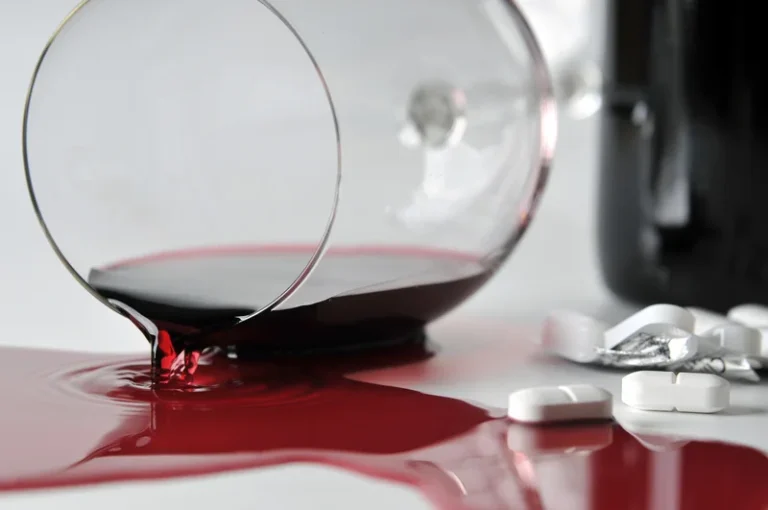Cannabidiol as an Intervention for Addictive Behaviors: A Systematic Review of the Evidence PMC

Hemp plants usually contain less than 0.3% of THC, containing higher levels of CBD. CBD engages with major receptors in the endocannabinoid system (ECS), the major regulatory network in humans. These receptors are spread throughout the body and deliver signals for the brain to interpret.
Other outcomes

CBD is technically an unregulated substance in the United States and therefore it ought to be used with caution. This is especially important for those taking additional medications and/or those with ongoing medical issues. Stomach upset or other gastrointestinal problems are another common side effect of CBD and CBD-derived products. Another cause for concern is the unreliability of the purity and dosage of CBD in products. A recent study of 84 CBD products bought online showed that more than a quarter of the products contained less CBD than labeled. A prescription cannabidiol (CBD) oil is considered an effective anti-seizure medication.

Products and Services
One of hundreds of components in marijuana, CBD does not cause a high by itself. However, studies suggest that CBD is an effective treatment for rare, severe forms of childhood epilepsy. Current evidence also suggests CBD may help reduce anxiety and chronic pain.
Effects of CBD on tobacco-related addictive behaviors
Cannabidiol CBD is a chemical found in marijuana, and the cannabis plant is used to manage various health conditions such as inflammatory and neuropathic pain. CBD has grown in popularity since the Farm Bill and federal legalization in 2018, especially within the world of health and wellness. There are many questions asked about the potential risks and benefits of CBD for public health-related problems, and ongoing is cannabidiol addictive misconceptions regarding whether it’s safe to use daily or possibly even addictive. The only addition that the author made to the patient’s treatment regime was the CBD oil. At the same time, the patient’s other supplement therapy was discontinued to simplify treatment, as no clear benefit was demonstrated. The initial regimen was 24 mg of the CBD oil, with 6 sprays PRN during the day and 2 sprays QHS.
- While CBD does not appear to be reinforcing on its own, its impact on cannabis-related addictive behaviors in animal models remains unclear.
- This earthy strain is known for its healing components and is a novel treatment sure to leave you feeling happy and uplifted.
- This meant that 12 trials using data from 803 participants contributed data to the meta-analysis.
- Still, the FDA has not approved using medical cannabis for pets and recommends owners consult with their veterinarians.
- A further five were excluded because they did not report data on withdrawal or adverse events in a systematic way.
- The results showed a significant reduction in the number of cigarettes smoked (≈40%) in the CBD inhaler group during the week of treatment, with a trend indicating a reduction after follow-up.
- The European Union (EU) has also established regulatory guidelines for hemp-derived CBD oil, allowing the cultivation of hemp as long as the THC content does not exceed 0.2%.
- People without blood pressure problems may also experience mild low blood pressure, as CBD has shown promise in reducing high blood pressure, causing lightheadedness.
- The endocannabinoid system is like our body’s operating system—it affects neurotransmitters that bind to receptors and impact pain, mood, appetite, sleep, and how we feel, move and react.
This means you may need to increase the dosage to achieve the same level of relief or benefits that you initially experienced with a lower dose. CBD oil can interact with medications, including many used to treat epilepsy. One of the reasons for this has to do with how your body breaks down (metabolizes) drugs.
- This is an important consideration, as these studies involved children rather than adults, relatively high doses of CBD, and the patients were often taking other epilepsy medications which can interact with CBD.
- The exact reasons why CBD causes this effect are not fully understood, but some research suggests that CBD’s impact on the endocannabinoid system might affect how saliva is produced.
- The authors of the study concluded that CBD could be best used to treat marijuana dependence and other substance use disorders.
- Critical Cure is an Indica-dominant cannabis strain that has a lovely balance of CBD and THC percentages at around eight percent each.
Please review this supplement label with your healthcare provider to discuss potential interactions with foods, other supplements, and medications. In one study, 57 men took either CBD oil or a sugar pill with no CBD (placebo) before a public-speaking event. The researchers assessed the participants’ anxiety levels using blood pressure and heart rate measures. The researchers also used a reliable test for mood states called the Visual Analog Mood Scale.
Are There Any Benefits Associated With Using CBD?

When CBD oil is ingested or CBD cream is applied topically, the cannabinoids work within the endocannabinoid system in a similar way. Essentially, they can mimic the endocannabinoids to interact with cannabinoid receptors and regulate certain processes. The legislation removed hemp from the Controlled Substances Act, legalizing the production, manufacture and sale of all hemp products that contain no more than 0.3 percent THC. Any product containing more than that amount is considered non-hemp cannabis, or marijuana, which contains significant amounts of THC. The FDA does not regulate CBD oil, and contrary to popular opinion, it does come with some risks. Until more research is done on CBD oil, it’s important to remember that it may not live up to the hype and could even be dangerous.
- Avenues Recovery is a community-based drug and alcohol rehabilitation center with locations across the United States.
- With the legalization of hemp — which is simply cannabis with less than 0.3% THC — and hemp-derived products containing CBD, there’s potential for those products to have a significant impact on drug testing programs.
- The usual CBD formulation is oil, but CBD is also sold as an extract, a vaporized liquid and an oil-based capsule.
- This article discusses the differences between CBD and THC, their medicinal uses, and their potential effects.
Currently, there is not enough evidence to recommend CBD as a treatment for any mental health condition. Some CBD manufacturers have come under government scrutiny for wild, indefensible claims, such that CBD is a cure-all for cancer or COVID-19, which it is not. We need more research, but CBD is proving to be a helpful, relatively non-toxic option for managing anxiety, insomnia, and chronic pain. Thus, CBD does not appear to have an impact on stimulants’ rewarding effect, but one study suggests that it may influence addictive behaviors during the relapse phase.
Drug interactions

These hepatic enzymes metabolize clobazam and sodium valproate, which were prescribed in over half of the patients in the three main epilepsy studies included in the meta-analysis [17, 18, 27]. Inhibition of CYP2C19 can increase the levels of clobazam’s metabolite, N-desmethylclobazam, by two- to seven-fold, which has a significant sedative effect [28]. In a recent experimental study, even very high acute doses of CBD (1.5 and 4.5 g orally) had limited effects on alertness, suggesting that CBD alone is not usually sedative [29]. Increased N-desmethylclobazam levels could also account for the increased odds of pneumonia in epileptic patients taking CBD, as this increases the risk of sedation, respiratory depression and aspiration [30].
The study was randomized, which involved ten healthy volunteers in groups that administered alcohol and CBD alone or in combination. CBD has several purported therapeutic properties on its own, including protective effects on stress vulnerability and neurotoxicity. These properties may indirectly serve in the treatment of addiction disorders. Research on the addictive potential of CBD is still relatively limited. Existing studies suggest that most people will tolerate it well and that it does not lead to addiction in the same way that substances like opioids or stimulants can.


 Вход В личных К...
Вход В личных К... 











